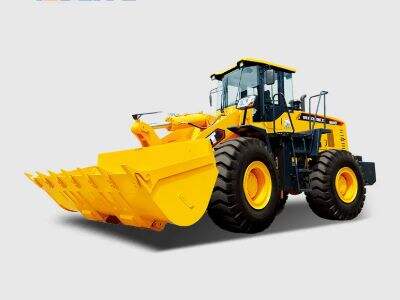Yingnuo Heavy Skid Steer Excavator is a heavy duty/strength skid steer excavator for lifting very heavy materials and digging dirt on construction sites. cool machine but have you ever thought how does it works. The answer lies in the science of ground pressure, essential something to know when you are using these kinds of machines.
What Is Ground Pressure?
Ground pressure is the amount of force exerted by a machine on the ground during operation. In simple words, it will make the machine to create more ground pressure as it moves, the heavier the machine itself pulls, the better the machine. Instead, skid steer backhoe excavators set themselves apart from traditional machines with their specialized tracks or wheels, allowing them to navigate tight spaces with relative ease. Whenever these tracks or wheels come in contact with ground, they exert ground pressure. This Pressure can vary according to the utilization and weight of the machine.
Why is Ground Pressure Control Important?
One of the most critical considerations for safely and accurately using a skid steer excavator involves handling ground pressure. Excessive ground pressure from a machine can make it to sink into the earth and stuck inside the soil. Often it becomes a challenge to pull out the machine, which can delay the work. Conversely, if more pressure is exerted by the machine onto the ground, it may not have sufficient adhesion to propel itself. This may also lead to issues in performing the task correctly.
Operators need to spread the load of the machine to correctly manage ground pressure. It is also essential to consider the width of the tracks or wheels to suit the soil type and conditions at the work site. This allows the machine to perform its job free of getting stuck or stalling, so operation is safe and effective.
THE EFFICIENCY OF GROUND PRESSURE
The ground pressure greatly affects the efficiency of skid steer and excavator. too Pressure high will burn more fuel and cost more and / or spend longer on the task. That's due to the fact the machine has to exert more effort to penetrate the ground. But too low of a pressure and the machine will have a hard time moving quickly (and thus prolong the job).
The heavy-duty skid steer excavators can perform optimally if the ground pressure is managed and balanced and adjusted. Which means they can get on site faster, and burn less fuel in the process, getting work done quicker and more efficiently.
Maximizing Ground Pressure to Enhance Performance
To accomplish improved ground pressure and functionality of skid steer excavators, operators must take into the account the following key elements. This is dependent on a number of factors, such as the type of soil, job site conditions, and machine setup or configuration.
If, say, the soil is soft and muddy, the operator should spread the weight of the machine evenly. It helps to stop the machine from getting bogged. If the soil is hard and solid, the operator should press on the tracks or wheels, which gives the machine a higher grip power on the surface.
Operators can also widen the tracks or wheels based on the job site conditions. Working on soft soil, in which the machine could focus up, a larger track or wheel will help the machine keep its center of balance, quite useful. But, as the width is narrower it can make the machine move easily on limited place when operating on hard soil.
Federal and ground pressure were improved among numerous other factors, making the skid steer excavator much more efficient for the operator.
The Impact of Ground Pressure on Safety and Efficiency
Ground pressure affects skid steer excavators not just in terms of how efficient they can work but also their stability and performance. If the machine presses too high there is a possibility that the machine will fall and can be dangerous. An insufficient pressure will result in the equipment being unable to lift or shift heavy materials, thereby stalling the work process.
Operators have to manage ground pressure in these scenarios to ensure that the machine remains operational within safe ground pressure limits. Which means: Having them check and adjust the machine so that its weight is evenly distributed, as well as the spacing of its tracks or wheels is set to match job site conditions. This helps to prevent accidents and ensure the machine runs optimally.


 Consult
Consult